
A morning on the Rideau (part 1)
November 24th, 2010
It was a great morning for diving ducks on the Rideau today.
For starters, the Goldeneyes are back! Not that this is new news--it's weeks-old news, in fact. But I finally got out there on a sunny morning to take pictures of them.
Most of you have heard me wax eloquent about goldeneyes before, but for the one or two newcomers: Common Goldeneyes are hardy diving ducks who regularly spend the winter in Ottawa, breeding north of us in the boreal forest. They winter on the limited stretches of the Rideau and Ottawa Rivers, usually near rapids, that remain unfrozen year-round. The mature males are black and white with a green gloss to their heads and a white cheek spot; the females are grey and brown.
Like other diving ducks, they submerge entirely underwater in search of food: members of a foraging goldeneye group will disappear and reappear every ten seconds or so, making them an exercise in patience for the bird-watcher! They forage actively even at temperatures of 30 below. They have an incredible tolerance for cold and for rough waters. They are my favorite ducks. I love their beauty and I love their strength.
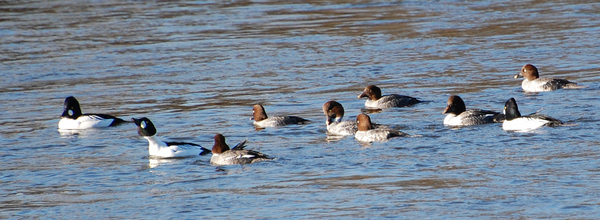
There's even a bit of courtship going on--that's what the male second from the left is up to with the neck-craning. This will continue, probably, until winter really sets in, then they'll resume the festivities in March.
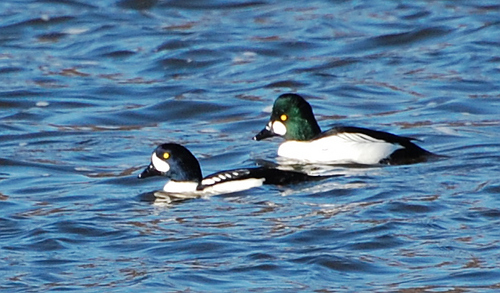
A total of three male Barrow's Goldeneyes have been seen mingling with the Commons. This once-rare species is becoming a more and more regular sight in Ottawa in winter, though they still only come in very small numbers--it's just that they come to predictable spots where birders know to find them. Above is a good comparison of a male Barrow's (front) and Common: you can see the different shape of the cheek spot, and the way the Barrow's' head is glossed with indigo instead of green. (If they weren't well-sunlit, both heads would look black.)
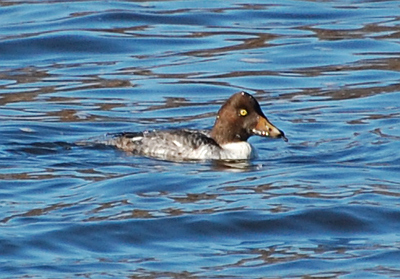
This one's a bit of a mystery. Ordinarily I'd peg it as a juvenile male Common--but if so why the all-yellow bill?
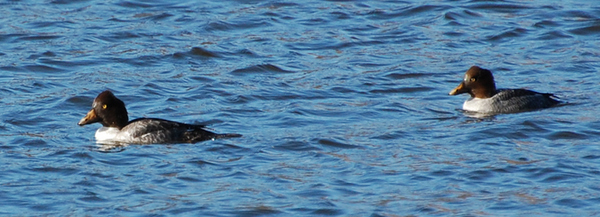
Comparison with female Common (behind).
Something epic
November 22nd, 2010
The backstory is that this snake invaded a woodpecker nest to eat the eggs. The woodpecker was not amused.
This isn't a Pileated; it's a similar species of South America, Crimson-Crested Woodpecker. The footage was taken in Brazil (obviously not by me!)
Common Merganser
November 21st, 2010
Found this female Common Merganser at Riverain Park on Thursday. Her head, bill, and above all feet were startling bits of color on an otherwise gray morning.
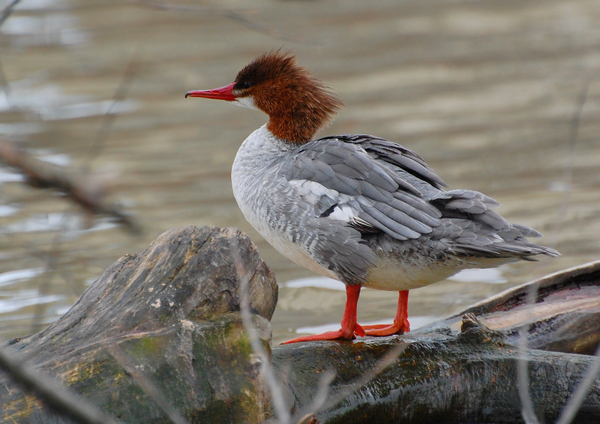
He Of The Flaming Crest
November 20th, 2010
I found this male Pileated Woodpecker drilling some old trees leaning over the Rideau. I often find this species along my stretch of river in November and December.
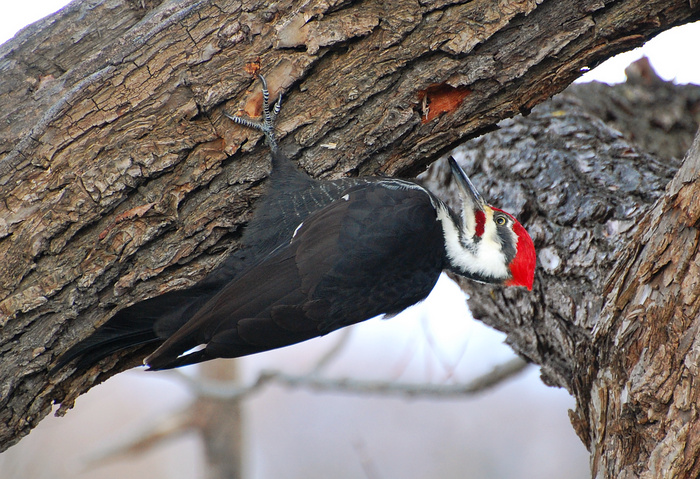
1680x1050 wallpaper
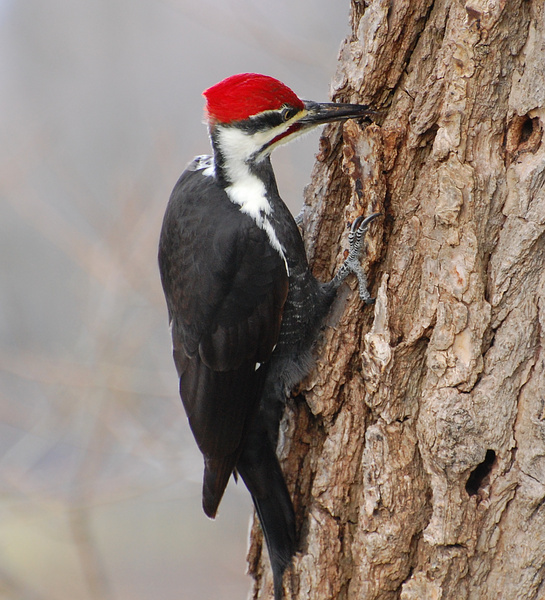
1680x1050 wallpaper
My surrogate backyard
November 18th, 2010
There's a winter bird feeding station about ten minutes walk from where I live, near Hurdman and the Rideau River. It's somewhat established, but often only sporadically maintained. In past years, it's attracted redpolls and siskins--boreal birds who sometimes spend the winter in Ottawa, depending on circumstances in the north (e.g. availability of their favorite foods.)
A big redpoll invasion is predicted for our region this winter. The availability of their favorite northern food, birch seeds, is low, plus, they've had a very successful breeding season, with reports of double and even triple broods. I'm excited about this and eager to see the Hurdman feeders well-maintained to attract them. Not knowing who maintains those feeders or if there's any sort of organized effort, I finally decided to just be proactive! Went to Wild Birds Unlimited, bought a shiny new finch feeder and a bag of nyjer seed (a.k.a. thistle seed), and installed it. Goldfinches, siskins, and redpolls are all closely related, and they all flock together at thistle-seed feeders. So if I establish a goldfinch magnet now, their northern relatives are likely to catch on fast when they arrive.
I had a lot of worries--what you may be forgiven for thinking is a ridiculous amount of neurosis over a bird feeder. Will it survive the weather? Will it survive the squirrels? Will someone be a jerk and steal it? Just how much nyjer seed am I going to be going through? Were the people who installed a finch feeder there in the past (but not, IIRC, last winter) planning on doing it this winter and if so will they feel that I'm stepping on their toes? And, most of all, will the finches come?
...the answer to that last question is yes. Oh my lord, yes.
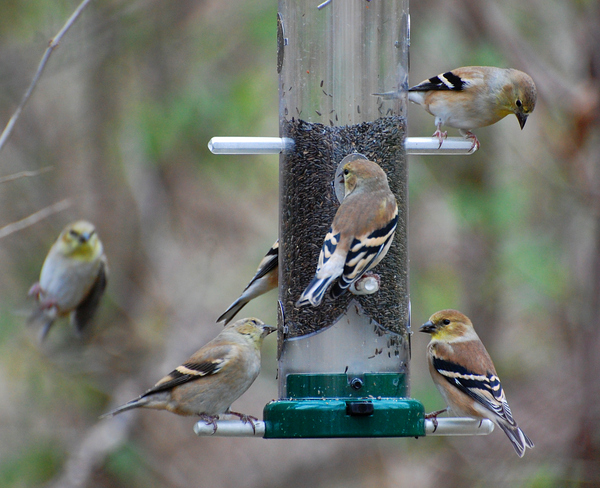
I've got goldfinches. Teeming, swarming goldfinches. Goldfinches enough to deplete a tube full of thistle seed every three days.
My finch feeder is such a success, that There Are Disputes:
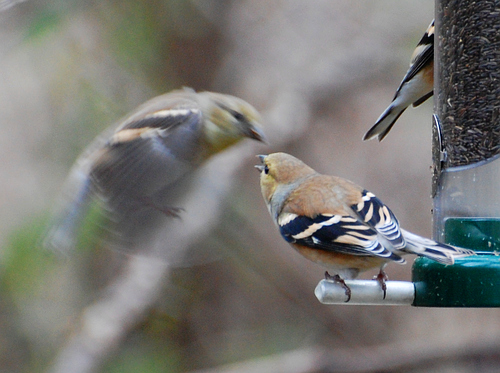
No redpolls yet. But come December or January, there will be redpolls!

Reaction shot: the above photo was taken immediately after a nearby chickadee made an alarm call.
Teal pix
November 2nd, 2010
A rare pleasure: Green-Winged Teal at Stony Swamp! Seemed a good reason to pull my camera out after an extended break.
I only ever see these guys in their fall migration--and then, often, in drab plumage, because the males are late coming out of eclipse. But now they're finished, with their chestnut-brown heads and glittering green cheek stripes. A small number of them have been on the marsh at Jack Pine Trail mingling with the resident mallards. They're not as bold as the mallards, but they're not terribly shy either. If you stand quietly on the boardwalk, they'll eventually swim out into plain view.
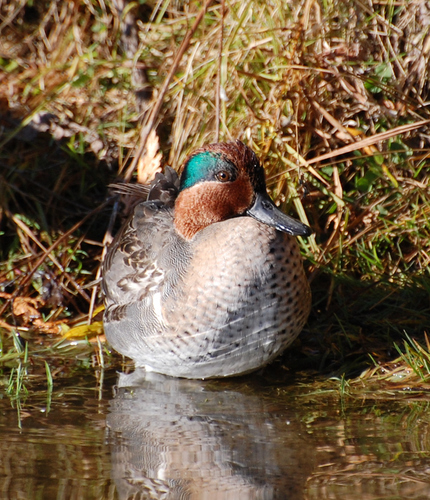

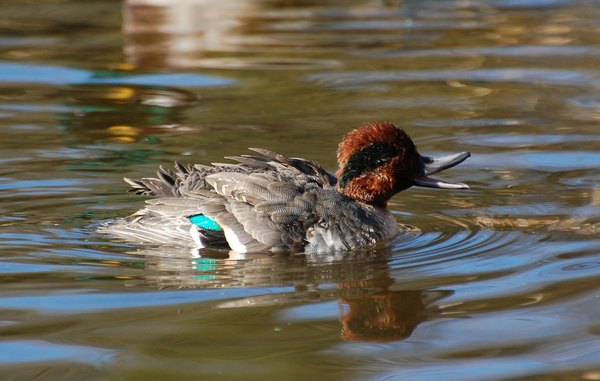
The mallards were exuberant today, zipping and splashing around in a big preen-o-rama. Here, one of the teal gets into the act.
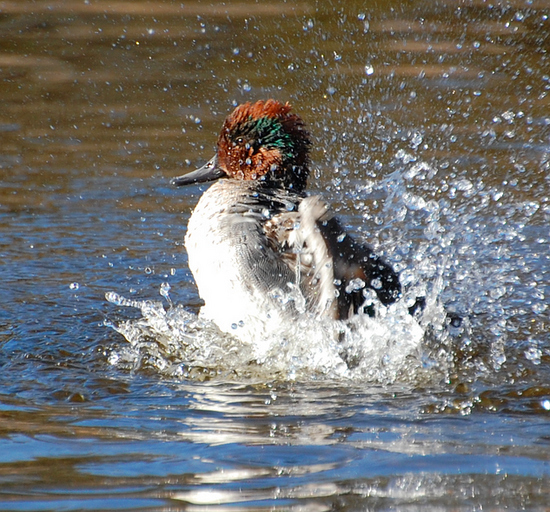
Size comparison with female mallard:

Birding report: Pembroke
October 17th, 2010
Yesterday was spent on a day trip to Pembroke with the OFNC. The group was quite small. The leader hypothesized that since the Trail & Landscape with the trip description only came out very recently, a lot of people probably didn't find out about it until it was too late.
Part one was Lake Doré, which holds the distinction of being the largest lake in North America without islands. It wasn't all I had hoped for, which I think was a matter of luck. There are times it's blanketed with migrant water birds, but yesterday was not one of those times.
It was definitely the most grebey place I've ever been to, though. Grebes are strange-looking water birds superficially similar to ducks, with squat bodies, long necks, and often vividly colored breeding plumage--russet red being a popular color. (An excellent shot of a breeding Eared Grebe is at the top of this page.) For us here in the east, alas, grebes in breeding colors are a rare treat. They mostly breed out west, and unlike male ducks, who lose their colors in late summer but get them back sometime in fall, grebes don't get their colors back until spring. Only the fairly plain-looking (but very cute) Pied-Billed Grebe is regularly seen here in spring and summer. Others, mainly in fall.
Grebes are fish-lovers, which explains why Lake Doré is so attractive to them. At just about every one of our various vantage points, we saw individuals and/or small groups of Horned Grebes. We also saw a few Red-Necked Grebes, which was my first lifer of the day. Other high points on the lake included Common Loons (also now in their winter plumage), Bonaparte's Gulls (the most common gull on the water), and an otter, who was enjoying the abundance of fish about as much as the grebes and loons.
At the picnic area where we had lunch, we were surprised by a flock of Pine Siskins in the treetops. Siskins are northern birds related to goldfinches who sometimes wander south in the winter--perhaps this sighting bodes well for soon seeing siskins in Ottawa? We had a major invasion of them back in winter of 2008/09--I posted pictures then.
Part two was Shaw Woods, a small remnant tract of old-growth forest. This was the more enjoyable part of the day, for me. It wasn't what I expected from old-growth woods: I expected the trees to tower, to be immense, primeval. Not really. No truly huge trunks, and the trees weren't any taller than, say, the white pines at Mud Lake.
What it was was beautiful. Rich fall colors, a diverse mix of trees (birch, beech, aspen, balsam fir, hemlock...), and a cedar swamp that proved to be especially productive for interesting birds. Sightings included a Hermit Thrush, a Winter Wren, and the star of the trip, my first Gray Jay. (Incidentally, that hyperlink's to the surprisingly excellent Wikipedia page for Gray Jay. I recommend it.) Gray Jays are northern birds related to Blue Jays and Crows. They're big, fluffy, and gray and white, like mutant overgrown chickadees. Mostly they stick to the boreal forest and the high mountains. Algonquin Park is the only place at all close to Ottawa where Gray Jays are common. That was where I had expected to get my lifer.
Then I came home and crashed hard. I did this trip on zero sleep but enjoyed it anyway!
Memories Of Goslings
October 10th, 2010
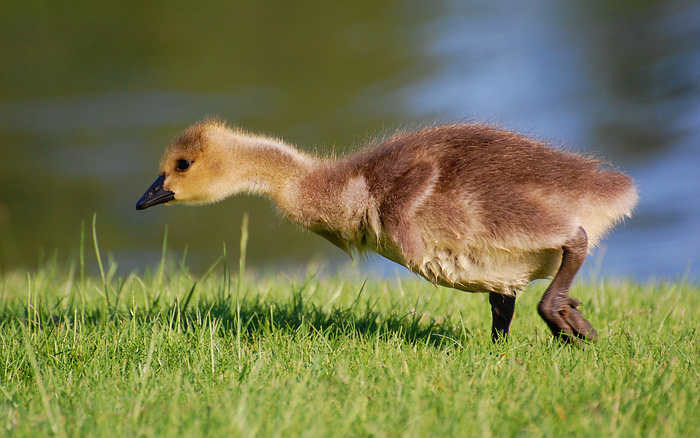
1680x1050 wallpaper
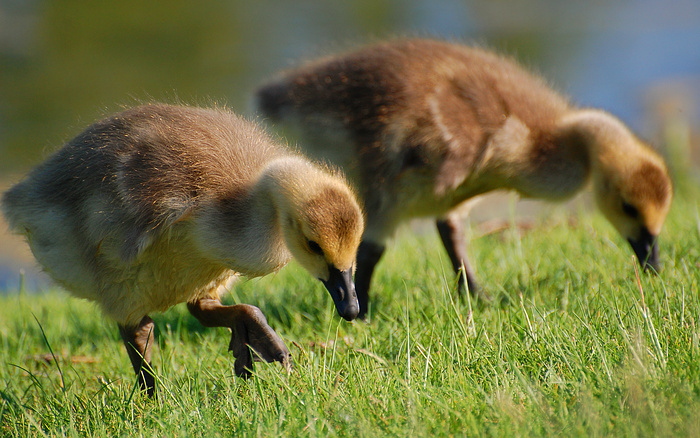
1680x1050 wallpaper
Squelchy
October 9th, 2010
Dear NCC,
I love you guys. I really do. I love Stony Swamp, Mer Bleue, the bike paths, the parks. I love all the hard work you do to protect our greenbelt, our biodiversity.
But if you're going to designate a trail an official trail, please maintain it. "Seasonally wet" should not mean "path cuts through foot-deep beaver pond."
IN OCTOBER.
Bits Of Sunshine
October 3rd, 2010
As the last of the migrating warblers trickle through, I remember the beautiful Yellow Warblers of summer. This is one of the first species to disappear when autumn comes.

1680x1050 wallpaper

|
